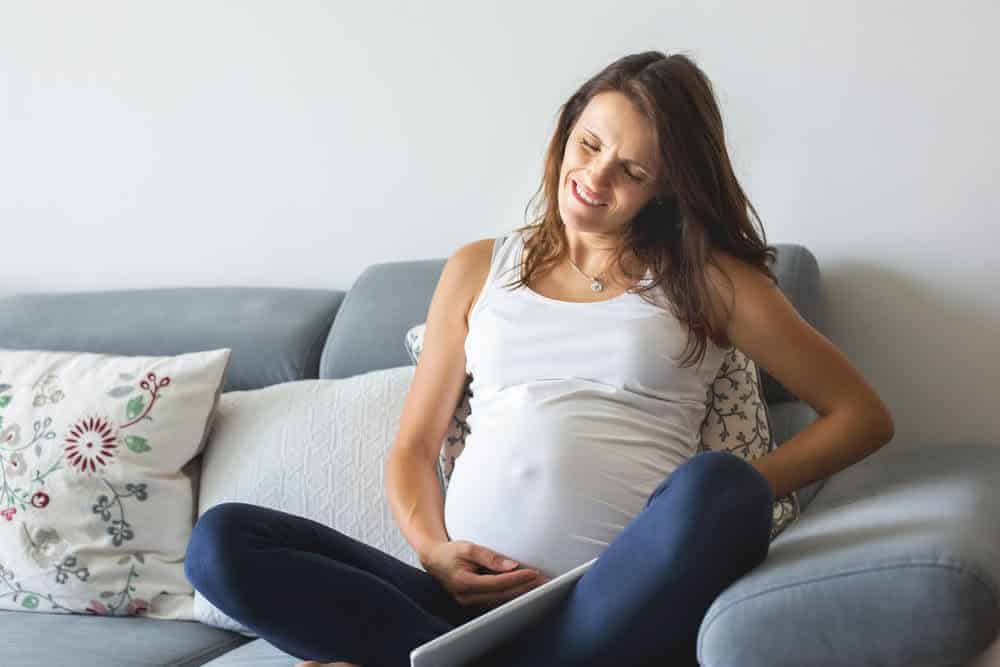
Table of Contents
Going into about and starting to contract is one of the most painful episodes of pregnancy. Having said that, contractions and labor is also the final sprint of the relay and it is at the onset of contractions that you know you’d finally get to see your baby now!
Labor contractions are your body’s mechanism to tighten the uterus for the delivery of your baby. The uterus is one of the strongest muscles in the woman’s body and all of your muscles, including the uterus, tighten and contract in this process. Labor contractions, also referred to as ‘waves,’ are typically defined as this pain that starts with low intensity, rises, peaks to the max, and then slowly goes down in intensity again. Lets know what do Contractions feel like.
Some of the signs and symptoms that can help you identify labor contractions are as follows-
- The pain radiates from your back to the front
- Your belly would feel rather hard
- Cramping, like that of periods, might occur
- Increased pelvic pressure
- Intense backache
How do contractions help childbirth?
When you contract, your uterus tightens at the top, applies pressure on the cervix, and helps push the baby to move downwards. The kind of pressure that is hence applied, further causes the cervix to open or dilate. Contractions can last anywhere between just a few seconds to a few minutes.
Oxytocin, the hormone that stimulates contractions, does so through the period of labor and as your labor progresses, contractions get much more intense, last longer in duration, and start occurring at closer intervals. It should also be noted that contractions might become less frequent when you get to the actual ‘pushing’ stage but they will still be very strong in order to help your body push the baby out.
When do contractions start?
Contractions, ideally, will start only when you are in your 37th week of pregnancy and never before. If you do happen to experience contraction-like symptoms prior to the 37th week, the phenomenon is called pre-term contractions and it might mean you’d be giving birth to an underdeveloped baby. It is recommended to seek medical help immediately.
How do I know if I have entered labor?
Your body will show your certain signs and symptoms of labor. If your contractions happen to take place at regular intervals and in a regular pattern, you most likely have entered your labor.
Following are the signs to identify labor-
- A feeling that your baby is dropping down or kind of a tightening from within
- Diarrhea
- Bloody show
- Mucus discharge from the vagina
- Water breaking in a gush or a steady leak
- Nausea
Regardless of the fact that your contractions are regular or irregular, it is recommended to contact your doctor or your midwife at the earliest.
How Do Time Contractions?
Timing your contractions is essential in order to determine if you really are in labor. Even when you’d call your doctor or your midwife to tell them about you experiencing contractions, they will most likely ask you how far apart they are.
Follow these steps to time your contractions-
- Note down the time when you first feel a tightening in your abdomen
- Note down the time when your contraction reaches the first peak
- Note the time when the tightening or the pain goes down in order to see how long it lasted; however, don’t stop timing the contractions yet
- Note the time the moment you feel a tightening onsetting again
While any analog can do this job for you, you could also instead use a timer app for the sake of ease, better accuracy, and convenience. Most commonly, women feel contractions in a 3-1-1 pattern. This means the contractions occur every three minutes, lasting for one minute and recurring for an hour.
Here’s a table to help you understand at what intervals do contractions usually take place through the labor-
| Labor stage | Duration between contractions | Length of contractions |
| Early labor | 5 to 30 minutes | 30 to 45 seconds |
| Active labor | 3 to 5 minutes | 45 to 60 seconds |
| Transition labor (the last stage before you start to push) | 30 seconds to 2 minutes | 60 to 90 seconds |
Final thoughts-
As a final takeaway, let’s discuss what you should be doing when your contractions begin.
Your contractions can literally happen any time unexpected and unwanted. You might be just lazing in the bed and you could suddenly feel a tightening take place. The most important thing to do, when you start to feel contractions, is to call your doctor as well as a family member to keep them in the loop.
Next, just relax through the process and don’t waste your body’s energy on unnecessary thoughts or stress because contractions mean you are all set to deliver your baby! Perhaps, just take a nice shower, pamper yourself with some snacks, read if you’d like to, keep yourself hydrated, and pack yourself a bag for the soon-to-happen hospital trip.
FAQs- How to Identify Contractions: What Do Contractions Feel Like?
1. What are Braxton-Hicks contractions ?
2. Do contractions guarantee labor ?
3. What is back labor ?
Reviewed By :

Esha Chainani - Obstetrician and Gynaecologist
Dr. Esha Chainani is an Obstetrician, Gynaecologist, and laparoscopic surgeon who aims to break the stigma around women’s health by advocating an inclusive and open practice of obstetrics and gynecology and an author of several internationally published research papers and health articles in the media like the Swaddle.
She also founded Premaa, a non-profit to reduce maternal morbidity and eventual maternal mortality by providing lower-income pregnant women living in urban areas with cell phone access through an app that can feature an entire section about contraception as well for a whole gamut of reproductive health.
A panel for multiple health sessions including with the UN, USAID, BMC, gender at work, and multiple non-profit organisations, and is on the advisory panel of the South Indian medical students association.
On behalf of the editorial team at Parenthoodbliss, we follow strict reporting guidelines and only use credible sources, along with peer-reviewed studies, academic research institutions, and highly respected health organizations. To learn about how we maintain content accurate and up-to-date by reading our medical review and editorial policy.










